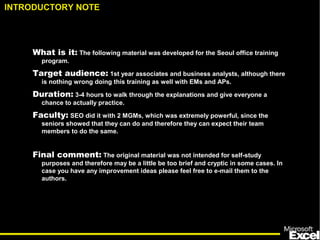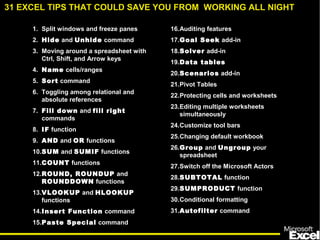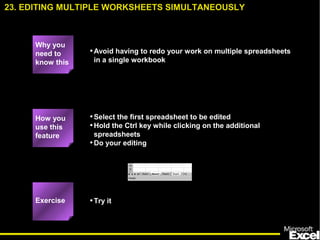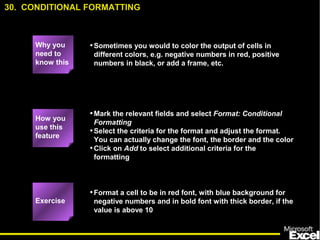This document provides an overview of a 3-4 hour training program on Excel tips and functions for associates and business analysts. It includes 31 Excel tips organized into sections that cover functions and tools to split windows, hide/unhide rows and columns, navigate sheets efficiently, name cells, sort data, use formulas like IF, SUM, COUNT, and VLOOKUP, and other topics. Exercises are provided throughout to help participants practice each skill. Senior managers previously found the material very useful for showing their own proficiency with Excel.









































